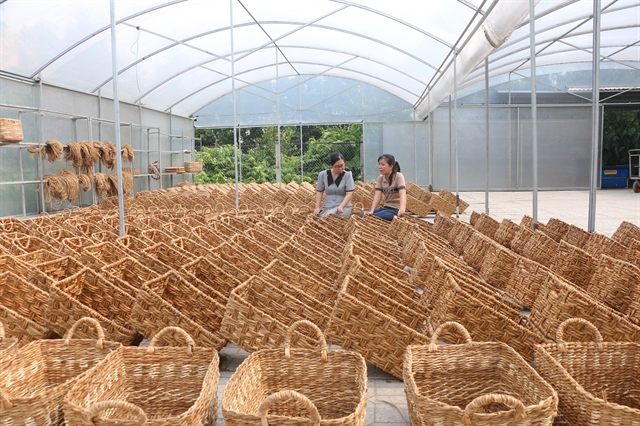 Economy
Economy

 |
| Handicraft products of MFC Mỹ Quới Cooperative in Sóc Trăng Province. Việt Nam has significant opportunities to promote the development of the creative economy. — VNA/VNS Photo Minh Hưng |
HÀ NỘI — Việt Nam is in the top 10 developing economies in exporting creative products with a value of US$14.153 billion, heard a conference on Tuesday.
The conference, co-organised by the Central Institute for Economic Management (CIEM) and the German Agency for International Cooperation (GIZ), discusses opportunities and recommendations for Việt Nam to promote the development of its creative economy.
According to Nguyễn Anh Dương, Head of the CIEM’s General Research Department, the global export of creative products increased from $208 billion in 2002 to $524 billion in 2020, in which Asia has been the largest exporter since 2007.
CIEM’s statistics showed that the world’s biggest exporters of creative products include the US, Italy, Germany, France, the UK, the Republic of Korea, Poland, Switzerland, the Netherlands and Japan, with a total value of $170.7 billion.
The top developing economies in term of creative product exports included mainland China, Hong Kong, Việt Nam, India, Taiwan (China), Malaysia, Singapore, Turkey, United Arab Emirates and Thailand, with a total value of $276.997 billion.
Việt Nam has significant opportunities to promote the development of creative economy, CIEM said.
Creative economic sectors include handicraft, fashion and design, culinary art, performing art, visual art, film and media, information technology and software engineering, tourism and cultural heritage, music and entertainment, publishing and literature, digital content creation, digital marketing and advertising.
CIEM pointed out that a young and technology-savvy population, favourable policies and rich cultural heritage coupled with the rapid digitalisation and economic integration will fuel the boom of the creative economy in Việt Nam.
A number of policies for the development of the creative economy in Việt Nam have been issued, such as the regulations on science and technology, intellectual property, performing arts and online games.
Still, there are problems in implementing creative economic projects in Việt Nam, Dương said.
He added that surveys in Phú Thọ, Sơn La and Phú Yên provinces showed that the creative economy remains a new issue which is not consistently understood.
Việt Nam could learn from the experiences of foreign countries in promoting creative economy development, according to CIEM.
For example, in the Republic of Korea, the creative economy has been set as a major agenda and policy since 2013. The Korean Government views the creative economy as a new economic strategy that creates new industries and markets by integrating and adapting the imagination and creativity of science, information and communication technology to create sustainable jobs.
In the US, around 4.01 per cent of the total number of businesses and 2.01 per cent of the workforce are participating in creative industries. Art and cultural economic activities accounted for 4.4 per cent of GDP, equivalent to $10.2 trillion in 2021.
The US supports workers and businesses in the creative industries with the Promoting the Local Arts and Creative Economy Act (PLACE). — VNS




